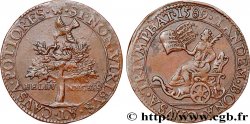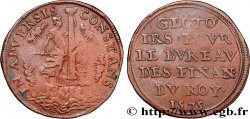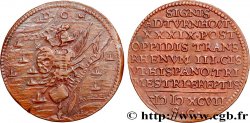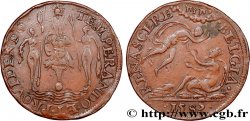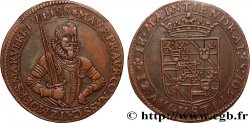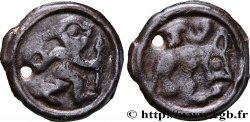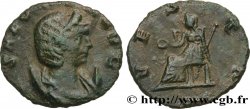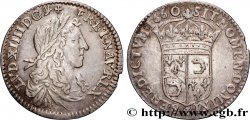数量
加入购物车

种类 Bataille de Turnhout
日期: 1597
铸币厂名称/城市 Dordrecht
材质 copper
直径 24 mm
模子方针 6 h.
重量 7,28 g.
侧面 Lisse
关于品相的说明
Faiblesse de frappe au niveau des légendes, magnifique exemplaire
出版目录中的项代码 :
正面
正面的文字 VICTORIA TVRNOTANA 24 IANVARII 1597.
正面的说明书 Les troupes espagnoles faisant face à celles du Prince Maurice de Nassau.
背面
背面的文字 A DOMINO FACTVM EST ISTVD.
背面的说明书 Armes d'Angleterre, de France et des Provinces-Unies .
评论
C’est la seconde fois que nous proposons à la vente ce jeton !
La ville de Turnhout est d'une grande importance stratégique et une garnison espagnole d'une importance conséquente, environ 4 500 hommes, y tient garnison. Le 22 janvier 1597, Maurice de Nassau réunit à 40 kilomètres au nord de Turnhout une armée de plus de 6 000 hommes, comprenant des troupes anglaises et écossaises.
Le commandant espagnol, ayant reçu des estimations exagérées sur l'importance de l'armée hollandaise, décide de se retirer de Turnhout dans la nuit du 23 au 24 janvier mais ce mouvement est surpris par les hollandais et Maurice de Nassau donne l'ordre à sa cavalerie de poursuivre les espagnols.
Maurice de Nassau renonce à poursuivre les fuyards et occupe Turnhout mais doit l'abandonner quelques jours plus tard devant l'arrivée d'une armée espagnole envoyée par Albert d'Autriche. Néanmoins, cette victoire a un grand retentissement dans les milieux militaires de l'époque car elle démontre la supériorité des reîtres, apparus très récemment, sur la cavalerie traditionnelle et l'inefficacité des piquiers contre eux.
.
La ville de Turnhout est d'une grande importance stratégique et une garnison espagnole d'une importance conséquente, environ 4 500 hommes, y tient garnison. Le 22 janvier 1597, Maurice de Nassau réunit à 40 kilomètres au nord de Turnhout une armée de plus de 6 000 hommes, comprenant des troupes anglaises et écossaises.
Le commandant espagnol, ayant reçu des estimations exagérées sur l'importance de l'armée hollandaise, décide de se retirer de Turnhout dans la nuit du 23 au 24 janvier mais ce mouvement est surpris par les hollandais et Maurice de Nassau donne l'ordre à sa cavalerie de poursuivre les espagnols.
Maurice de Nassau renonce à poursuivre les fuyards et occupe Turnhout mais doit l'abandonner quelques jours plus tard devant l'arrivée d'une armée espagnole envoyée par Albert d'Autriche. Néanmoins, cette victoire a un grand retentissement dans les milieux militaires de l'époque car elle démontre la supériorité des reîtres, apparus très récemment, sur la cavalerie traditionnelle et l'inefficacité des piquiers contre eux.
.







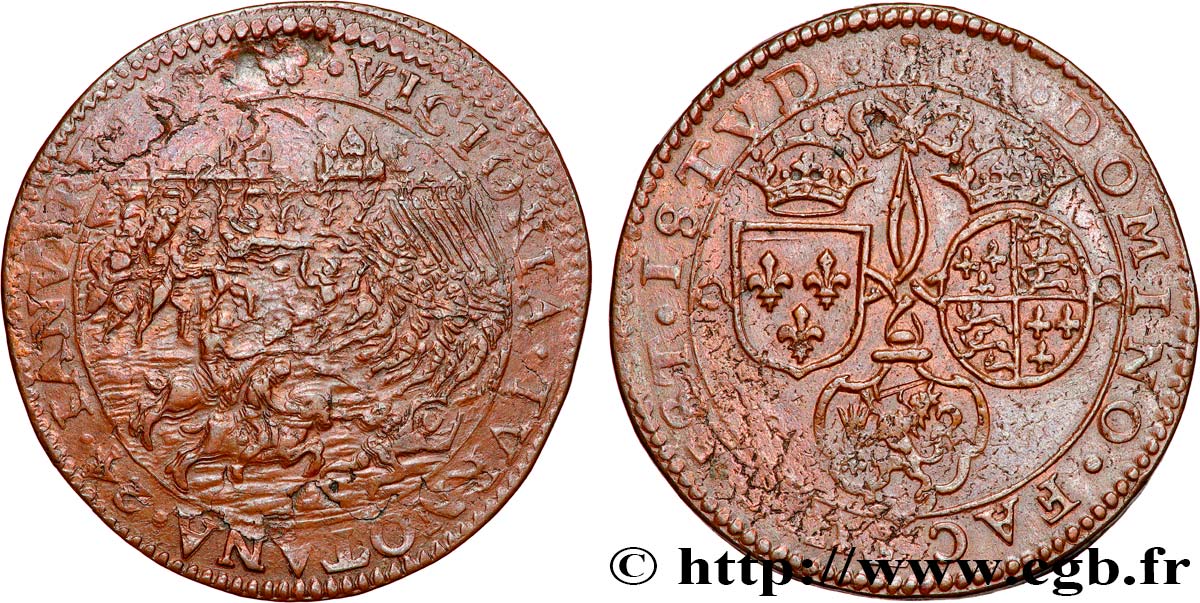
 对产品描述纠错
对产品描述纠错 打印
打印 分享我的选择
分享我的选择 提问
提问 Consign / sell
Consign / sell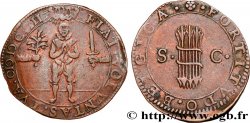
 产品介绍
产品介绍